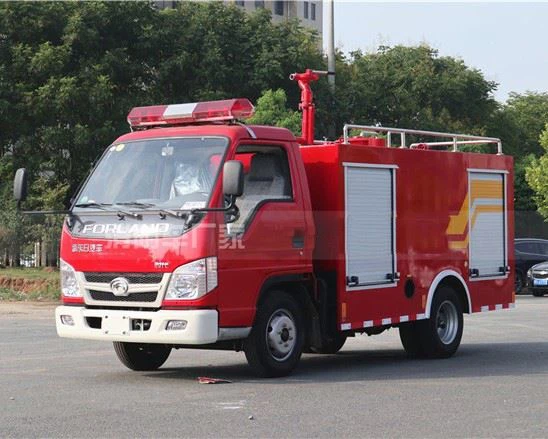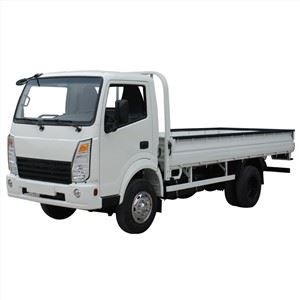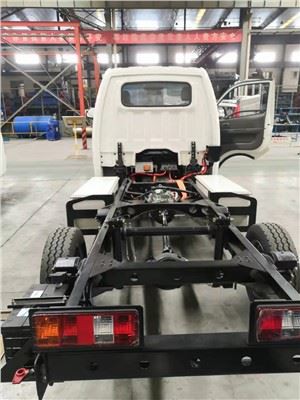All You Need to Know About Oil Truck Tankers: Types, Uses, and Safety

Introduction
Oil truck tankers are vital components in the transportation of petroleum products across vast distances. Their design and functionality play a central role in the logistics of the oil and gas industry, ensuring that crude oil, gasoline, diesel, and other petroleum products are delivered safely and efficiently. This article covers the different types of oil truck tankers, their uses, operational considerations, safety measures, and more, providing a comprehensive overview for anyone interested in this essential industry segment.
Understanding Oil Truck Tankers
What is an Oil Truck Tanker?
An oil truck tanker is a specially designed vehicle used to transport liquid petroleum products. These tankers come in various shapes and sizes, depending on their intended use and the type of cargo they are designed to carry. They are equipped with safety features to minimize leaks and protect the environment.
Types of Oil Truck Tankers

There are several types of oil truck tankers, each suited for different responsibilities in the transport of petroleum products.

1. Crude Oil Tankers
These are large tankers designed specifically to transport unrefined crude oil from oil fields to refineries. They can vary significantly in size, with larger vessels capable of carrying millions of barrels of oil.
2. Product Tankers
These tankers are used to transport refined petroleum products such as diesel, gasoline, and jet fuel. Product tankers often feature multiple segregated compartments to separate different products during transportation.
3. Chemical Tankers
While primarily used for transporting chemicals, many of these tankers can also carry oil and petroleum products. They are designed to handle different types of cargo safely, preventing contamination.
4. Bitumen Tankers
Bitumen tankers are used for transporting asphalt and bitumen, which are heavier oil products. These tankers often come with heating elements to keep the cargo in a liquid state during transport.
Uses of Oil Truck Tankers
Oil truck tankers are primarily used in the following scenarios:
1. Transportation of Crude Oil
The primary use of oil tankers is to transport crude oil from extraction sites to refineries where it can be processed into useful products.
2. Distribution of Refined Products
After refining, oil truck tankers distribute various petroleum products to gas stations, airports, and industrial consumers.
3. Emergency Fuel Supply
In times of natural disasters or fuel shortages, oil truck tankers can provide essential supplies to affected areas, helping ensure that essential services remain operational.
Operational Considerations for Oil Tanker Transport
Smooth and efficient oil tanker operations require attention to several key factors.
1. Route Planning
Effective route planning is vital for timely deliveries and cost-reduction. Utilizing transportation management systems can help identify the best routes, avoiding traffic and hazardous conditions.
2. Scheduling and Coordination
Coordinating with refineries, storage facilities, and distribution points ensures that oil tankers operate efficiently and meet customer demands on time.
3. Maintenance
Regular maintenance of oil tankers is critical for safe operations. Inspecting tanks, pumps, and safety equipment helps prevent spills and accidents.
Safety in Oil Truck Tanker Operations
Importance of Safety Protocols
Safety is paramount in the operation of oil truck tankers due to the potential consequences of spills or accidents. Companies must adhere to strict safety protocols and regulations.
Key Safety Measures
| Safety Measure | Description |
|---|---|
| Regular Inspections | Conduct routine checks on tank integrity, valves, and hoses to ensure compliance with safety standards. |
| Driver Training | Provide comprehensive training for drivers focusing on safe handling, emergency response, and spill prevention. |
| Emergency Response Planning | Develop and practice emergency response plans to effectively manage spills and accidents. |
| Use of Safety Equipment | Equip tankers with emergency shut-off systems and spill containment measures to reduce risks. |
Environmental Impact of Oil Truck Tankers
While oil truck tankers provide essential services, they can also pose environmental risks. The industry has made strides in reducing its impact, but spills, leaks, and emissions are still concerns.
1. Minimizing Spillage
Implementing double-hull designs in tankers helps prevent leaks by providing an additional barrier against ruptures, thus minimizing the risk of spillage.
2. Reducing Emissions
Many companies are investing in cleaner technologies and fuels, aiming to reduce the environmental footprint of their operations.

3. Response to Incidents
Establishing effective response strategies for oil spills involves coordination with local authorities and environmental agencies, ensuring rapid containment and cleanup efforts.
Economic Aspects of Oil Truck Tankers
Cost Factors
Operating an oil truck tanker involves various costs that can significantly impact profitability.
1. Fuel Costs
The price of fuel is a major operational cost for tankers. Efficient routing and maintaining optimal speed can help reduce these costs.
2. Maintenance and Repair
Regular maintenance is essential for safe operations, but it can also represent a substantial expense. Companies should budget effectively for routine inspections and repairs.
3. Insurance
Due to the inherent risks associated with transporting oil, tankers require comprehensive insurance coverage, adding to overall operating costs.
Impact on Local Economies
Oil truck tankers play a significant role in local economies by providing jobs and supporting the transport infrastructure.
1. Job Creation
From drivers and logistics coordinators to refinery workers, the oil trucking sector generates numerous employment opportunities.
2. Infrastructure Development
Investment in roads and transportation facilities to support oil tanker operations contributes to broader infrastructure enhancement, benefiting local communities.
Future Trends in Oil Truck Tanker Operations
Innovative Technologies
The industry is witnessing several technological advancements that enhance the safety, efficiency, and environmental performance of oil truck tankers.
1. Automation and AI
Automation technologies are beginning to play a role in the transport of oil, from automated route planning to driver-assistance systems that improve safety.
2. Alternative Fuels
With a push towards sustainability, the exploration of alternative fuels, such as biofuels or electric-powered trucks, is gaining momentum within the industry.
3. Enhanced Monitoring Systems
Advanced tracking and monitoring technologies allow for real-time assessment of cargo conditions and potential hazards, further increasing safety.
Global Regulations and Standards
As safety and environmental concerns grow, regulations surrounding oil truck tanker operations are likely to become stricter.
1. Emission Standards
New regulations may be introduced to limit emissions from oil tankers, promoting the use of cleaner technologies and fuels.
2. International Guidelines
The International Maritime Organization (IMO) and other bodies continuously develop guidelines to regulate the safety and environmental aspects of oil transportation.
FAQs about Oil Truck Tankers
1. What is the capacity of an oil truck tanker?
The capacity of oil truck tankers can vary widely depending on their design. Smaller tankers may hold around 5,000 gallons, while larger ones can transport up to 100,000 gallons or more.
2. How are oil truck tankers constructed?
Most oil truck tankers are constructed with materials resistant to corrosion and damage. They typically have multiple compartments for safety and efficiency.
3. What should be done in case of an oil spill?
In the event of an oil spill, it is crucial to contain the spill immediately and notify the appropriate authorities. Follow emergency response protocols to minimize environmental damage.
4. Are oil truck tankers equipped with safety features?
Yes, oil truck tankers are equipped with various safety features, including spill containment systems, emergency shut-off valves, and monitoring equipment.
5. How do regulations affect oil truck tanker operations?
Regulations dictate safety standards, environmental protections, and operational procedures that oil truck tankers must follow to minimize risk and ensure compliance.
6. What are the environmental impacts of oil truck tankers?
Oil truck tankers can impact the environment through oil spills, emissions, and potential contamination. However, stringent regulations and safety measures aim to mitigate these effects.
